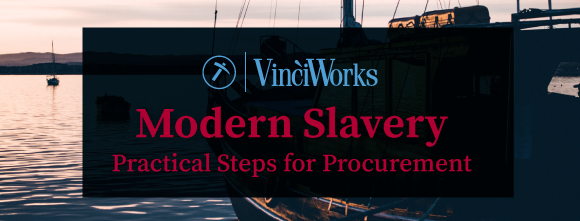Since the first modern slavery statements were published a year ago, we have gained perspective on what companies can do to fight slavery in the supply chain and the benefits of a robust anti-slavery programme. On Tuesday 26th September at 12:00pm, Richard Beale will be joining VinciWorks to discuss the practical aspects of modern slavery compliance and answer any questions you may have.
Meet the expert
 Richard Beale is the Global Director of Supply Chain at Marshalls plc. and has over 20 years of experience managing global supply chain and procurement in the FMCG, retail, financial services, private equity and manufacturing sectors. At Marshalls, Richard is piloting a cutting-edge supplier education programme focusing on the elimination of modern slavery.
Richard Beale is the Global Director of Supply Chain at Marshalls plc. and has over 20 years of experience managing global supply chain and procurement in the FMCG, retail, financial services, private equity and manufacturing sectors. At Marshalls, Richard is piloting a cutting-edge supplier education programme focusing on the elimination of modern slavery.
Continue reading




 The UK’s Modern Slavery Act is changing the landscape of how companies deal with the risk of modern slavery in their supply chains. While the requirement to issue a modern slavery and human trafficking report only applies to companies with a global turnover greater than £36m, businesses of all sizes are getting ahead of the curve and introducing comprehensive anti-slavery and anti-trafficking policies across their supply chain.
The UK’s Modern Slavery Act is changing the landscape of how companies deal with the risk of modern slavery in their supply chains. While the requirement to issue a modern slavery and human trafficking report only applies to companies with a global turnover greater than £36m, businesses of all sizes are getting ahead of the curve and introducing comprehensive anti-slavery and anti-trafficking policies across their supply chain.


